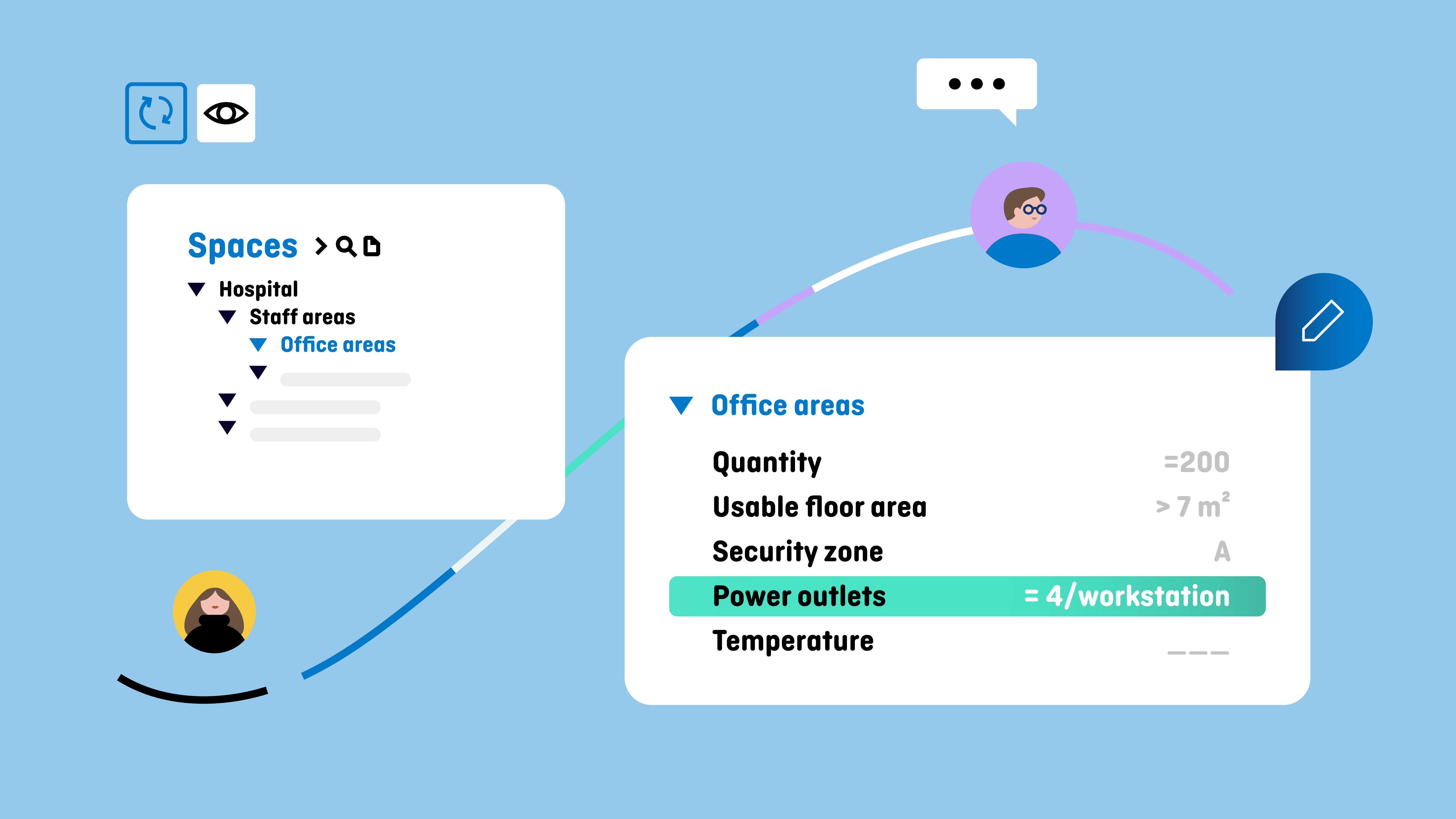
Der Bedarfsplan ist in Deinem Projekt ein wichtiges Kommunikationsmittel. Sein zentraler Zweck ist es, die Bedarfe und Ziele des Bauherrn an die Parteien zu kommunizieren, die das Bauwerk entwerfen, planen und schließlich bauen. Daher sollten Bauherren besonders darauf achten, wie Anforderungen formuliert und präsentiert werden. Hier sind einige der grundlegenden Kriterien dazu.
Als Bauherr willst Du Dir sicher sein, dass Deine Dienstleister genau verstehen, welche Erwartungen Du an das Projekt hast. Du solltest Dir also sorgfältig Gedanken darüber machen, wie Du Deine Anforderungen formulierst und präsentierst. Klingt erst mal offensichtlich – aber in der Praxis findet man in vielen Raumprogrammen dennoch vage Formulierungen und unverständliche technische Texte. Dabei besteht die Gefahr, dass Deine Botschaft bei Deinen Vertragspartnern nicht ganz richtig ankommt.
Um dieses Risiko zu minimieren, halte Dich an die folgenden sieben Grundprinzipien guter Kommunikation. Ein aussagekräftiger Bedarfsplan sollte folgende Merkmale aufweisen:
EINDEUTIG – Das Raumprogramm sollte glasklar darlegen, was der Bauherr sich vom Projekt erwartet. Es sollte keinen Raum für Zweifel und Interpretationen geben. Was genau ist mit „gutem Innenraumklima“ oder „eine ausreichende Anzahl von Steckdosen“ gemeint?
EINHEITLICH – Anforderungen sollten nicht miteinander konkurrieren und Terminologie wie Maßeinheiten sollten einheitlich genutzt werden (also nicht an einer Stelle von „nutzbarer Grundfläche“ und an anderer von „Nettogrundfläche“ sprechen).
PRÄGNANT – Das Planungsteam sollte nicht mit Unmengen von Informationen überschüttet werden. Konzentriere Dich auf die tatsächlichen Anforderungen. Es ist nicht notwendig, alle Hintergrundinformationen bereitzustellen (wie Messungen zur Gebäudeauslastung, Berichte zu Interviews, etc.).
VOLLSTÄNDIG – Der Anforderungskatalog sollte alle Informationen zu den relevanten Themen beinhalten, die das Planungsteam benötigt, damit es im späteren Verlauf keine Überraschungen gibt. Wenn im Bedarfsplan immer wieder „in der nächsten Phase festzulegen“ steht, deutet das auf ein unausgereiftes Raumprogramm hin.
KONKRET – Die Anforderungen sollten möglichst spezifisch und präzise beschrieben werden, sodass kein Raum für Interpretation bleibt. Hinter weit gefassten Aussagen wie „Das Gebäude soll von hoher Qualität sein“ oder „Die Instandhaltung sollte einfach sein“ steckt wenig Bedeutung.
MACHBAR – Die Inhalte des Bedarfsplans sollten in Hinsicht auf das Projektbudget und den Zeitrahmen realistisch sein. Darüber hinaus sollte das Raumprogramm auch formell durch die Projektleitung freigegeben werden.
ÜBERZEUGEND – Im besten Fall ist der Bedarfsplan nicht nur informativ und anschaulich, sondern auch inspirierend. Gut formulierte Ziele zu wichtigen Aspekten wie zirkulärem Bauen und Barrierefreiheit können Begeisterung für das Projekt wecken und den Entwurfsprozess vorantreiben.
Zu guter Letzt ist noch wichtig anzumerken, dass Kommunikation keine Einbahnstraße ist. Die Anforderungen werden üblicherweise auf Kundenseite formuliert, aber die Architekten und Ingenieure sind diejenigen, die damit arbeiten. Es ist also unerlässlich, dass das ganze Projektteam die Anforderungen genauestens versteht. Um dieses Verständnis herzustellen und zu verbessern, sollte der Bedarfsplan nicht einfach kommentarlos übergeben werden, sondern in einer Besprechung mit dem gesamten Projektteam diskutiert werden. Verstehen alle die Anforderungen genau so, wie vom Bauherrn angedacht? Gibt es noch Ziele oder Erfordernisse, die nicht ganz klar sind? Werden Teile des Raumprogramms als umständlich oder nicht machbar angesehen? Fehlen an irgendeiner Stelle noch Informationen? Es geht dabei nicht darum, den Bedarfsplan insgesamt infrage zu stellen. Doch Planungsteams haben in der Regel einen großen Erfahrungsschatz aus vorherigen Projekten und gehen mit einem frischen Blickwinkel an die Planung heran – davon kann das Raumprogramm nur profitieren.
Empfehlungen
- Plane in Deinem Projekt Zeit für die Abstimmung des Bedarfsplans mit dem Planungsteam ein.
- Frage Deine Vertragspartner explizit, ob einige der Anforderungen noch genauer erläutert werden müssen oder ob noch Anforderungen ergänzt, angepasst oder verbessert werden sollten.
- Falls das Planungsteam bereits während der Erstellung des Raumprogramms an Bord ist, beziehe es in die Entwicklung mit ein.
- Falls der Bedarfsplan ein formeller, unveränderbarer Vertrag ist, sollten alle Inhalte gut getestet und mit Experten besprochen werden, bevor das Dokument formalisiert wird.
- Vergiss nicht, einen klaren Ablauf festzulegen, wie Änderungen am Raumprogramm an das Planungsteam kommuniziert werden.
